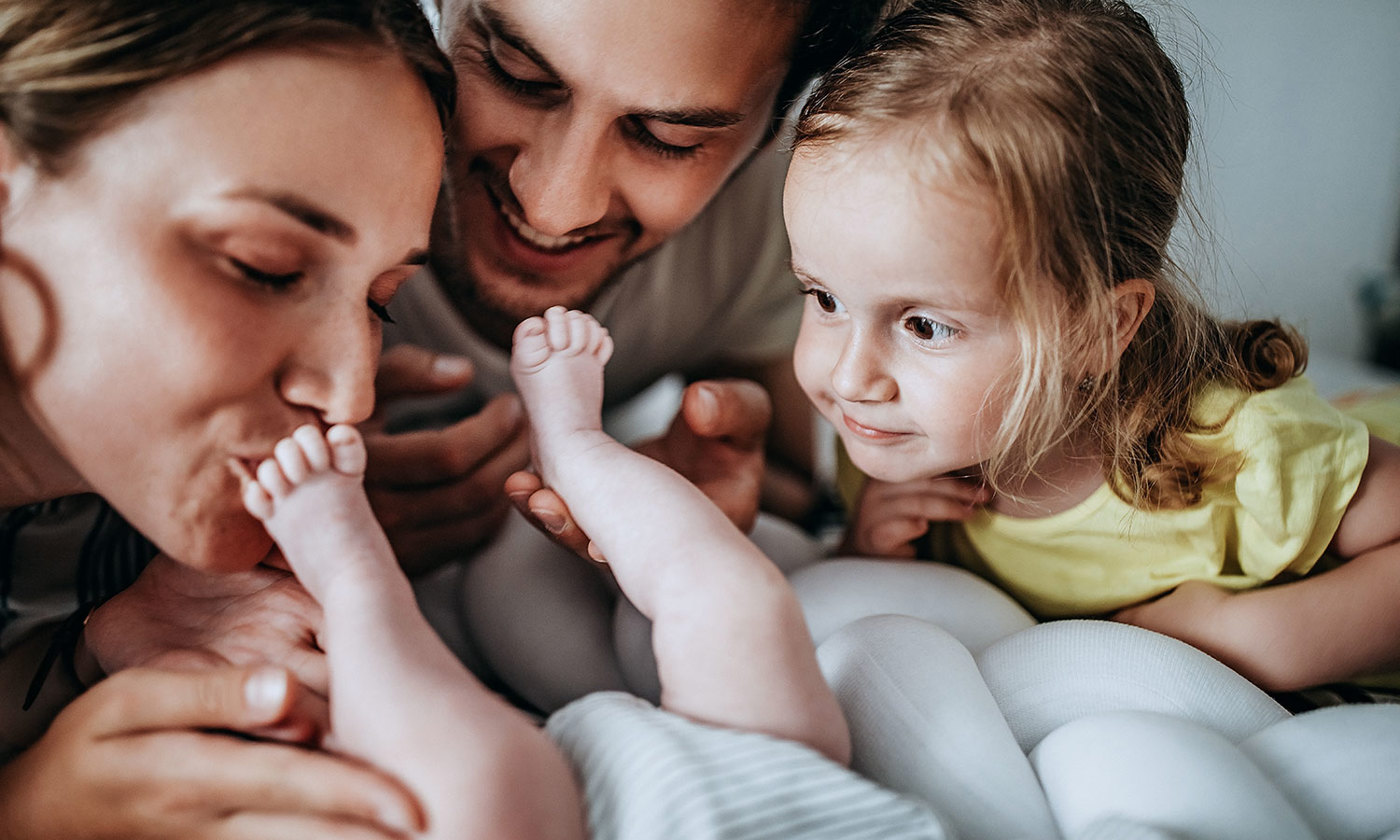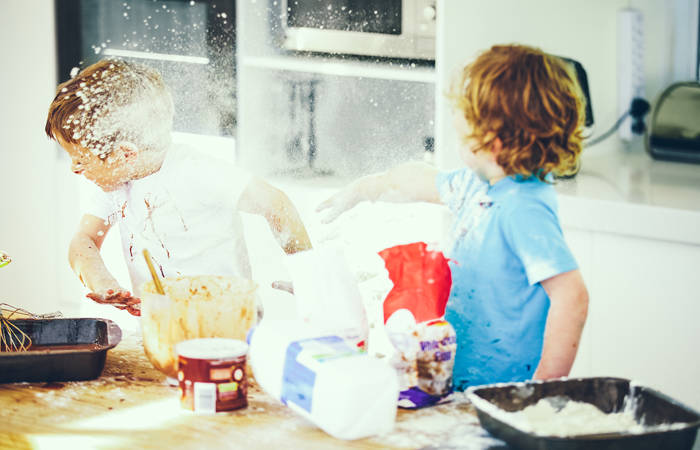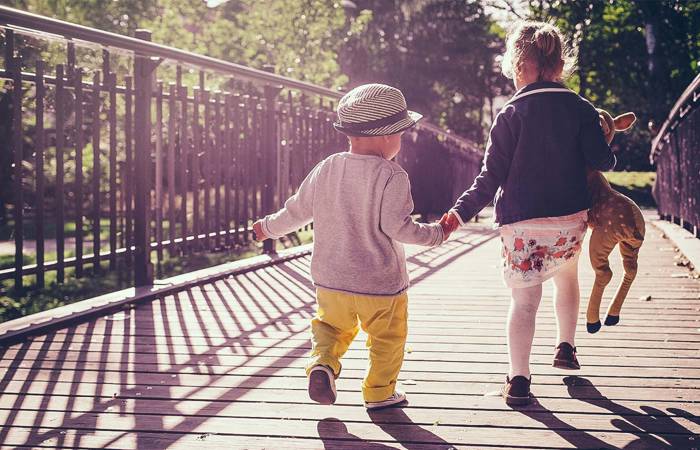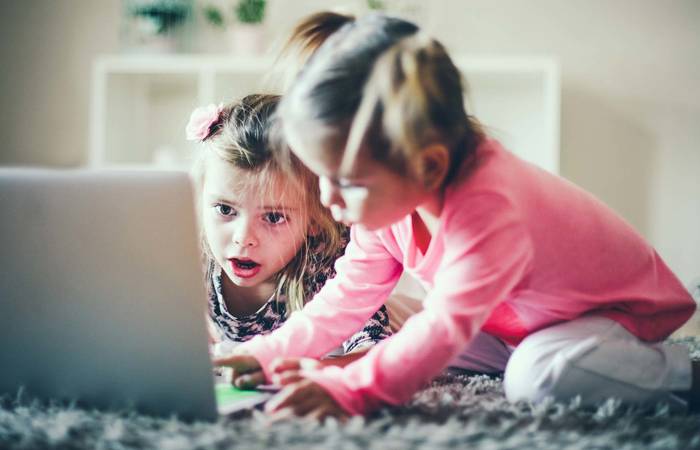Like what you see?
Sign up to receive more free parenting advice.
Thank you for subscribing to our newsletter!
Lifestyle

Credit: iStock.com/eclipse_images
Why is it that despite being from the same family, growing up with the same parents, with the same rules and values, children can turn out to be so different?
One reason may be birth order.
Michael Grose, Director of Parenting Ideas and author of Why First-borns Rule the World and Later-borns Want to Change It explains how the position a child is born into within a family, can impact their personality.
“Birth order is where nature meets nurture,” he says.
“So, nature is the genetic imprint and temperament, then we add in the environment that a child is born into, which is nurture.
Mr Grose explains that there are two parts to nurture.
First, the family frame, which is what children have in common, such as family values and parenting style.
Then, where the differences start to take hold, is the child’s birth order.
“The position that a child enters the family has a requirement of them, whether that’s first, middle or last. It’s the way you fit into the family unit,” he explains.
“On top of that, is the parents’ experience and expectations for each child.
“Typically, the parents’ hopes, dreams and aspirations fall heavily on the first-born’s shoulders, and as parents have more children, they relax and loosen up.”
Mr Grose adds that birth order personality is set within the first five to seven years of a child’s life, as this is usually when children spend most of their time within the family unit.
He also adds that it isn’t always as simple as first, second etc.
“In some cultures, parents value one gender over the other, so a second-born boy (with a first-born girl) might be treated like a first-born based on the parents’ expectations of that gender,” he notes.
Birth order traits can also be shuffled around due to large age gaps, where, if the gap is wide enough, later-born children can take on first-born traits.
“We also need to remember that birth order is more powerful in the family unit than in the outside world,” Mr Grose highlights.
What he means is while first-borns display leadership qualities and most likely boss their younger siblings around, it doesn’t necessarily mean they are going to become the Prime Minister or CEO.
“Birth order is a good lens to look at your children. It’s not intended to complicate things, but to shed a light on what is happening in families and it can be useful to help parents understand the differences between their children,” he says.
Typically, the parents’ hopes, dreams and aspirations fall heavily on the first-born’s shoulders, and as parents have more children, they relax and loosen up.Michael Grose
Stay up to date with the latest news and articles from First Five Years
Thank you for subscribing to our newsletter!
The shrinking family
Birth order theory originated in the 1930s when families were quite large, however, as couples now have fewer children, birth order theory has needed to be reassessed.
“When I wrote the first edition of this book in 2003, the majority of families had three children, but now, the majority of Western families have two children or less,” explains Mr Grose.
“We are witnessing the disappearance of the middle child, which is a significant societal loss, and more couples are choosing to have only one child.”
The biggest shift is that first-borns are becoming the biggest percentage of the population.
“First-borns are more anxiety prone, they tend to be perfectionists, they’re introverted, and they follow and uphold the rules, so it will be interesting to see that impact on society in the future,” Mr Grose says.
He adds that it will also be interesting to see the impact of the demise of the middle child.
“Only 15 per cent of children under the age of 15 are middle children, and while middle children get a bad rap, research has shown that these middles are generally resilient and flexible, so they are most likely to go with the flow,” he says.
“They are also called the ‘people’s people’ as they have more friends.
“When you are stuck in the middle, you learn to get along with your youngest and eldest siblings and we often underestimate how much you practise on your siblings.”
Mr Grose says that we now have more 'only' children, where they were perhaps a minority, they have now firmly taken their place with the rest of the birth order.
“Only children sometimes lack the capacity to share and get on with others, and sometimes they struggle in school because of this, particularly boys, but they do well on self esteem and achievement as they get all of their parents’ attention and resources,” he explains.
The biggest shake up of birth order is the addition of a new birth order position.
“The second child is now also the youngest child,” explains Mr Grose referring to it as the Prince Harry effect.
He explains that in two-children families who have a boy and girl, it’s more likely for both children to have first-born attributes, particularly if the parents have clearly defined expectations and hopes for each gender.
The Prince Harry effect is more likely to happen when both children are the same gender, and the age gap is smaller.
“These second born children are never called the baby despite being the youngest of the family,” Mr Grose says.
“They share characteristics of the youngest, they rebel against the rules and challenge the status quo.
“For example, if the first-born is academic, then the second and youngest born will do something completely different.
“They aren’t attached to their parents’ approval, but they do want their attention.”
How to parent according to birth order
“There are two parts to parenting,” explains Mr Grose.
“The first is intimacy, which is the relationship parents have with their children.
“The second is space, which is the opportunity for children to go their own way, do their own thing without someone looking over their shoulder.”
He says that while first-borns typically have a strong relationship with their parents, they don’t get much space.
As for seconds and beyond, those children will get more space, but it will be harder for parents to have an individual relationship with that child.
“For example, parents will know exactly what their first-born had for breakfast, but for subsequent children, breakfast will be tick-a-box,” says Mr Grose.
He believes that parents can use birth order to manage and motivate their children.
“For first-borns, don’t put too much pressure on them, rather focus on how they got to that achievement, so praise their effort rather than the result,” he recommends.
“This releases first-born children from the pressure they feel to please their parents.
“The opposite is true for younger children, they need a bit more pressure, we, as parents, are a bit more relaxed with them so be aware of the discipline that they need.
“As for middles, they don’t get much one-on-one time with their parents, so carving out time for it to be just them and you, would benefit them the most.”







